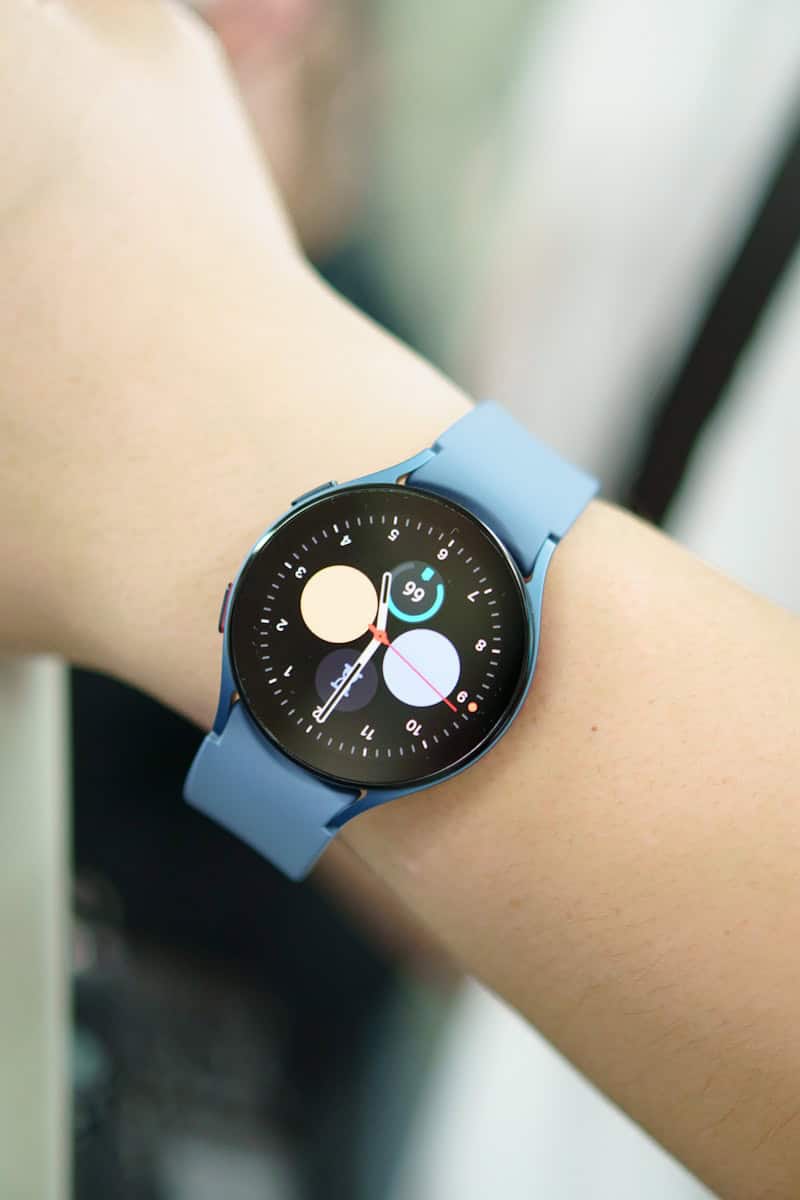Apple Watch wearers often wonder if their device can handle water exposure. While Apple Watches are water resistant, they are not fully waterproof. Most Apple Watch models can withstand water depths of up to 50 meters, making them suitable for swimming and shallow water activities.
The level of water resistance varies between models. The Apple Watch Ultra boasts the highest rating, able to withstand depths of up to 100 meters. This makes it ideal for water sports and diving. Other models like the Series 9 and SE are safe for swimming in pools or the ocean.
To keep your Apple Watch safe, avoid exposing it to high-pressure water, such as jet skis or water skiing. After swimming, rinse your watch with fresh water and dry it thoroughly. Remember to eject water from the speaker using the Water Lock feature to prevent damage.
| Apple Watch Model | Water Resistance Rating |
|---|---|
| Ultra 2 | Up to 100 meters |
| Series 10 | Up to 50 meters |
| SE (2nd gen) | Up to 50 meters |
| Series 9 | Up to 50 meters |
Understanding Water Resistance in Technology
Water resistance in tech devices protects against moisture damage. Different standards define levels of protection. These standards help users know what their devices can handle.
IPX7 and IEC Standard 60529
IPX7 is part of the IEC Standard 60529. It rates how well a device resists water. IPX7 means a device can survive being in water up to 1 meter deep for 30 minutes.
This rating is common for many gadgets. Phones, smartwatches, and speakers often have IPX7. It’s good for splashes and short dips. But it doesn’t mean you can swim with the device.
IEC 60529 has other ratings too. IPX4 protects against splashes. IPX8 is for deeper water. Each level shows what kind of water contact is safe.
ISO Standard 22810:2010 for Watches
ISO 22810:2010 is just for watches. It’s stricter than IPX7. This standard tests watches for real use in water.
A watch rated to 50 meters isn’t for diving that deep. It means it can handle swimming and snorkeling. The test checks for constant water pressure. It also looks at temperature changes and button use underwater.
Apple Watches use this standard. Most models are good for shallow-water swimming. But the rating can weaken over time. Always check your specific model’s limits.
Differences Between Water-Resistant and Waterproof
Water-resistant and waterproof are not the same. Water-resistant items can handle some water. But they’re not meant to be submerged for long.
Waterproof items keep water out completely. But no device is truly waterproof forever. That’s why most companies use “water-resistant” instead.
Apple Watches are water-resistant, not waterproof. They can handle sweat, rain, and hand washing. Some models are okay for swimming. But none should be used for scuba diving or water skiing.
Always check your device’s specific rating. And remember, water resistance can lessen over time.
Apple Watch Water Resistance Capabilities
Apple Watch models offer varying levels of water resistance. These features allow users to wear their devices while swimming or engaging in water-based activities. The capabilities differ based on the specific model and series.
Apple Watch Series 1 to Apple Watch Series 9
The water resistance of Apple Watch models has improved over time. Series 1 had basic splash resistance. Series 2 and later are swimproof. You can wear them while swimming in pools or the ocean.
Series 2 to 9 have a water resistance rating of 50 meters (WR50). This means you can use them for:
• Swimming
• Shallow water activities
• Showering
To protect your watch:
- Rinse it with fresh water after swimming in salt water
- Avoid soap, shampoo, and conditioner
- Dry it thoroughly after water exposure
Remember, water resistance may decrease over time. Avoid high-velocity water sports or deep submersion.
Special Features of Apple Watch Ultra
Apple Watch Ultra takes water resistance to new depths. It’s built for water sports and diving. Key features include:
• Water resistance up to 100 meters
• EN13319-compliant depth gauge
• Water temperature sensor
You can use Ultra for:
• High-speed water sports
• Scuba diving (up to 40 meters)
• Freediving
The Ultra 2 maintains these robust water capabilities. It’s ideal for water enthusiasts and professional divers.
Assessing Water Resistance Ratings
Understanding water resistance ratings helps you use your Apple Watch safely. Here’s what the ratings mean:
• WR50: Suitable for swimming in shallow water
• 100m: Can handle high-pressure water activities
Factors that can affect water resistance:
• Age of the watch
• Impacts or drops
• Exposure to chemicals
To maintain water resistance:
- Check your watch’s rating regularly
- Avoid pressing buttons underwater
- Clean and dry your watch after water exposure
If you notice any changes in your watch’s performance after water exposure, contact Apple Support. They can assess if your device needs service or replacement.
Activities and Limitations for Water Use
Apple Watch models have different water resistance levels. This affects how you can use them in water. Know what your watch can handle to keep it safe.
Everyday Water Exposure: Showering and Swimming
You can wear your Apple Watch while showering or swimming in a pool. The water resistance rating is up to 50 meters for most models. This means it’s fine for shallow-water activities.
Before getting in the water, turn on Water Lock. This feature stops the screen from responding to touches. To turn it on:
- Swipe up from the bottom of the screen
- Tap the water droplet icon
After you’re done, turn the Digital Crown to unlock the screen. This also pushes out any water in the speaker.
Remember, soap and shampoo can damage the water seals. It’s best to avoid these when wearing your watch.
High-Speed Water Sports and Scuba Diving
Regular Apple Watch models aren’t made for high-speed water sports or scuba diving. The force of water in these activities can damage the watch.
But the Apple Watch Ultra is different. It can handle:
- Water depths up to 100 meters
- High-speed water sports like water skiing
- Recreational scuba diving to 40 meters
If you plan to do these activities often, the Ultra is your best choice. It’s built tougher to handle more extreme conditions.
Caring for Apple Watch after Exposure to Water
After using your watch in water, it’s important to clean it. Here’s what to do:
- Rinse it with fresh water if you used it in salt water
- Dry it with a soft, lint-free cloth
Don’t use heat, compressed air, or cleaning products. These can harm your watch.
If your watch gets wet, the water resistance may decrease over time. It’s a good idea to have it checked if you use it in water often.
Check your watch’s water resistance regularly. Look for signs of damage or wear. If you notice any, avoid using it in water until you can get it checked.
Maintenance and Care for Optimal Performance
Proper care of your Apple Watch ensures it stays water-resistant and functions well. Regular cleaning and following the right steps after water exposure help keep your device in top shape.
Water Lock and Eject Water Feature
The Water Lock feature is key for swim tracking and water activities. Turn it on before getting in water. It stops accidental taps on the screen. After your swim, turn the Digital Crown to unlock the screen. This also ejects water from the speaker.
To use Water Lock:
- Swipe up on the watch face
- Tap the water droplet icon
- The display will lock
To unlock and eject water:
- Turn the Digital Crown
- You’ll hear beeps as water is pushed out
- Wipe off excess water
Clean your watch with fresh water after swimming in saltwater or chlorinated pools. This prevents buildup that could harm the device.
Leather Bands and Saltwater Exposure
Leather bands need special care. They are not meant for water activities. Take them off before swimming or showering. Salt water can damage leather quickly.
If your leather band gets wet:
- Remove it from the watch
- Wipe it with a soft, lint-free cloth
- Let it air dry completely
- Don’t use heat to dry it
For daily wear, clean leather bands with a soft, dry cloth. Avoid soaps or other cleaners. They can strip the leather’s natural oils.
Consider a sport band for water activities. These are made to get wet and dry quickly.
Digital Crown and Microphone Performance
The Digital Crown and microphone need regular cleaning to work well. Dirt and debris can build up, affecting their function.
To clean the Digital Crown:
- Turn off your watch
- Hold it under warm, running water
- Turn and press the crown while rinsing
- Dry with a soft, lint-free cloth
For the microphone:
- Rinse it briefly under running water
- Tap the watch against your hand to remove excess water
- Let it air dry or use a soft cloth
Don’t use soaps, cleaning products, or compressed air. These can damage the watch’s water-resistant seals.
Clean these parts after exposure to saltwater, sand, or other particles. This keeps buttons moving smoothly and ensures clear audio pickup.
Frequently Asked Questions
Apple Watches offer varying levels of water resistance. Different models have distinct capabilities for water-related activities.
Can the Apple Watch Series 7 be submerged in water?
Yes, you can submerge the Apple Watch Series 7 in water. It’s water-resistant up to 50 meters. You can wear it while swimming in a pool or ocean.
What water resistance capabilities does the Apple Watch SE have?
The Apple Watch SE has the same water resistance as the Series 7. You can use it for swimming and other water activities. It’s safe to use in water up to 50 meters deep.
Is it safe to use the Apple Watch Series 5 in aquatic environments?
You can safely use the Apple Watch Series 5 in water. It’s water-resistant to 50 meters. You can swim with it in pools or open water.
How does the water resistance of the Apple Watch Series 3 differ from newer models?
The Apple Watch Series 3 has the same 50-meter water resistance as newer models. But its water resistance may have decreased over time. Newer watches might handle water better.
Are swimming activities recommended with the Apple Watch Series 8?
Swimming is fine with the Apple Watch Series 8. It’s designed for water activities. You can track your swims and use it in pools or open water.
What is the maximum depth and duration the Apple Watch can withstand underwater?
Most Apple Watches can handle depths up to 50 meters. The Apple Watch Ultra can go deeper, up to 100 meters. There’s no set time limit for underwater use. But it’s best to avoid long periods submerged.







